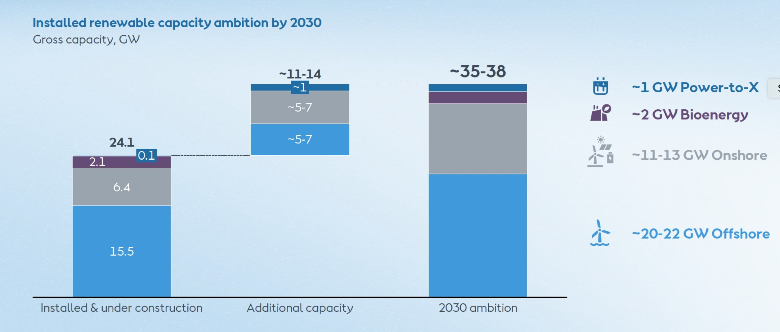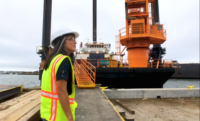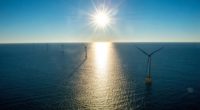Renewable Energy
Orsted Cuts Offshore Wind Target, Exits Some Non-US Markets

Danish developer reduced its 2030 global renewable energy capacity goal from 50 GW to 35-38 GW as it announced its exit from some markets.
Photo courtesy of Ørsted
Having suffered what it said were "significant" financial losses last year, Denmark-based offshore wind energy developer Orsted A/S is reshaping its business. The company announced plans to de-risk U.S. operations and pull out altogether from some smaller markets, including Norway, Spain, Portugal and Japan.
A large global player in that clean energy sector, the company is also trimming its focus on floating offshore projects in a strategy that will result in 600-800 job losses.
“We now present a robust business plan and ... plan to more than double our current installed capacity of renewable energy by 2030,” said Mads Nipper, Orsted president and CEO.
However, the new target of 35-38 GW of all types by 2030 represents a significant drop from the previous 50 GW goal. Orsted now has 6.7 GW of offshore projects due to go online by 2027 in Taiwan, Germany, the U.K and off the U.S. east coast.
 Chart courtesy of Ørsted
Chart courtesy of Ørsted
The company has also secured rights to three offshore projects totaling 3.7 GW in the U.S. and Poland, which are due for completion by 2029, and plans to invest about $26 billion in offshore projects by 2030.
While difficulties in the U.S. market lie behind some of Orsted's travails, the European market has just gone through "its best year on record for new offshore wind installations," according to the Belgium-based trade body WindEurope.
"A record" 4.2 GW of new offshore capacity went online last year, up 40% on 2022, it said. Additionally, $32 billion of new investments covering 9 GW in eight wind farms was committed.
If all European countries were to implement their procurement plans, 40 GW of projects would be auctioned this year, notes WindEurope. The biggest potential in the next two years will be in Germany, Denmark, U.K., France and Netherlands.
And in a significant acknowledgment of fast-rising offshore project construction costs, the U.K. government has raised the strike price limit for this year's auction by 66%, adds the trade body.





